Abnormal forms in the leaf succulent collection of the Timiryazev Institute of Plant Physiology of Russian Academy of Sciences
by Peter Lapshin, Moscow, Russia
Translated by Irina Ten
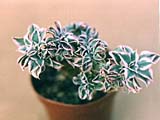
Рис. 1. Aeonium decorum Webb. cv. 'Sunburst' f. cristata
|
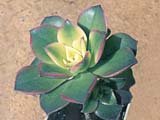
Рис. 2. Aeonium hawordtii f. variegata
|
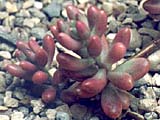
Рис. 3. Sedum rubrotinctum cv. 'Aurora'
|
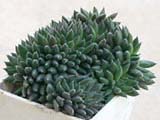
Рис. 4. Sinocrassula ynnaniensis f. cristata
|
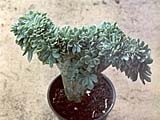
Рис. 5. Echeveria glauca ssp. pumila f. cristata
|
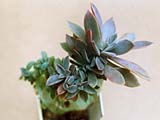
Рис. 6. Graptoveria cv. 'Fred Ives' f. cristata
|
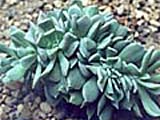
Рис. 7. Echeveria runyonii cv. "Topsy-turvy" f. cristata
|
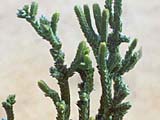
Рис. 8. Crassula lycopodioides f. monstrosa
|
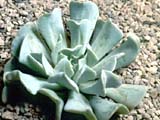
Рис. 9. Echeveria runyonii cv. "Topsy-turvy"
|
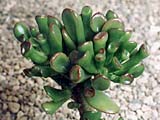
Рис. 10. Crassula portulacea f. monstrosa (C. ovata cv. 'Hobbit', Cr. cv. 'Gollum')
|
Sometimes on a plant one could find shoots with abnormal appearance caused by a disturbance in a growing tip. In this article we give a brief description of such abnormalities as variegation (forma variegata) and cristation (forma cristata).
The growing tip (meristem) consists of a few hundred of initial cells that divide and form leaves and stems. During the division some cells can spontaneously mutate and that will cause abnormal shoots. They are usually variegated, cristate or monstrose. These mutations can be found in combination, e.g. there are variegated crested forms such as Aeonium decorum 'Sunburst' f. cristata (Photo 1), Euphorbia lactea f. variegata f. cristata. E-magazine "Cultivar" often writes about cactophyles' observations on appearance and development of such oddities among cacti and succulents.
Variegates
Variegated forms (chlorophyll-deficient chimeras) emerge as a result of mutations in initial cells of a meristem that make some cells incapable to synthesize the green pigment chlorophyll. The external manifestation is regular yellow, white or red areas on all leaves (and/or on the stem) of the shoot. As the shoot develops, its leaves and/or stem will acquire a peculiar color pattern. Since the distribution of initial cells in meristem is not random the pattern is more or less regular and depends on which group of cells mutated and also on еру systematic group to which the plant belongs to. For monocotyledons the pattern is usually striation in the center or along the leaf edges or in random order. Dicotyledons have more variations and there are detailed classifications of their color patterns. One of these classifications (for Cactaceae family) developed by Nikolay Shemorakov was published (in an abridged version) in the issue 18 of e-magazine "Cultivar" (see the article "Cultivar's classification by stem color".
We will try to divide chlorophyll-deficient forms into following groups, not claiming completeness.
I. The complete lack of ability to synthesize chlorophyll by part of cells of the leaf. As a result the leaves obtain various patterns of an additional color (yellow, white or pink). It can be on the edges or on the contrary in the center of a leaf so the leaves obtain different patterns. This case covers the majority of forms seen on the pictures.
II. In some cases not the part but all initial cells have problems with synthesis and functioning of chlorophyll, e.g. chlorophyll is synthesized with big difficulties. External manifestation of such a problem is young yellow leaves on the actively growing shoot which will become green later, sometimes only in the end of the growing season. A good example is Aeonium haworthii 'Kiwi' f. variegata (Photo 2).
III. The opposite case is when synthesized chlorophyll is unstable and quickly become discolored under bright light. The young leaves are green initially but then grow lighter. Such cultivars are very sensitive to the light intensity.
IV. Disorders expressed in a lower level of chlorophyll in the cells that causes a lighter plant color. This effect may be related to the previous case or it may have another nature.
V. The distribution of cells without chlorophyll in a cylinder of meristem is not radial but concentric. For example, only external layers consist of non-chlorophyll cells. In this case the plants look faded as Sedum rubrotinctum 'Aurora' in Photo 3.
Such abnormalities may happen for the following possible reasons:
- Flaws in a transmission of genetic information in the meristem, the so called "somatic" mutations. In other words, a shoot with new features had accidentally happened on a plant and then the shoott was propagated vegetatively. Seed propagation of such plants would not preserve its abnormal features, the appearance would return to species standards retaining the normal coloring of the species.
- Interspecific and others hybrids with systematically different parents and uncoordinated chlorophyll synthesis because of a particular combination of genes. Seed propagation, if it's possible, would most likely produce plants with a different combination of genes (closer to one of the parents) and descendents wouldn't preserve variegation. A possibility to obtain a stable line with desired characteristic by seed propagation exists but it is insignificant.
- True genetic mutations allowing to have all the descendents (vegetative and seminal) the desirable variegated phenotype (appearance). Thus, if an abnormal form was found among seedlings there is a small chance that this abnormality will be inherited after seed propagation. However, the majority of common variegated cultivars have either the first or the second type of variegation which makes seed propagation useless.
Cristates
Cristation is a defect of a meristem, namely a lack of coordination when initial cells divide. As a result the shoots have axial symmetry instead of central symmetry. This aberration is widely spread in Cactaceae family. The abnormality can also often be found among leaf succulents but it is not typical for some genera. Cultivation of the cristate forms is worthy of a special mention because an accidental appearance of a crest happens quite often and these plants attract attention of collectors thanks to their prominent ornamental features. Furthermore the crested forms can be usually reproduced vegetatively without difficulties.
A crested form can be reproduced only vegetatively. For some leaf succulents it is sufficient to have any part of the mother plant - a leaf or even an ordinary, non-crested shoot (Sinocrassula yunnaniensis – Photo 4, Echeveria glauca ssp. pumila f. ?ristata – Photo 5) in order to reproduce crested form. In other cases only a fragment of the crested shoot is suitable for reproduction whereas leaves and normal, not crested shoots don't inherit desirable qualities, e. g. Graptoveria 'Fried Yves' (Photo 6), Echeveria runyonii 'Topsy-Turvy' f. cristata (Photo 7).
Other growth abnormalities
Other abnormalities (ex. cristates and variegates) such as monstrose and polytomous forms are uncommon among leaf succulents. Monstrosity can be roughly described as appearance of unusually diminished shoots followed by chaotic branching. For leaf succulents this abnormality is similar to cristation and isn't intentionally cultivated. For example, let's take a closer look at Crassula lycopodioides f. monstrosa (Photo 8) which has areas with an irregular leaf arrangement, stem distortion and unusual branching pattern. This form is less attractive than a normal specimen of Crassula lycopodioides. Other growth abnormality that can be sometimes found in collections looks like distorted leaves turned the wrong way up, for example, Echeveria runyonii 'Topsy-turvy' (Photo 9), Crassula obliqua 'Hobbit' (Photo 10) and Sempervivum X 'Odytii'. The Echeveria has leaves folded down along central vein, the edges of Sempervivum leaves are almost completely grown together from the base of leaf to the top and the Crassula leaves are fully accrete and have a hoof shape. Normal leaves grow very rarely on this Crassula, only when an old trunk gives recurring shoots or if it grows actively in rich soil with minimum of light permissible for successful growth.
Oddities in culture
Variegates usually need more light than a normal plants but can also be sensible to light excess (depends on the origin of the plant). Variegated forms often grow slower than usual green plants and response more quickly to changes in cultivation. More cautious care is advised.
Some variegated cultivars change their colors seasonally depending on light intensity and day length. Forms with patterned leaves often depend only on the light intensity, the more light they get the greener the plants. For some cultivars the important factor is not only light but also the growth activity of the plant which depends on cultivation conditions provided by its owner, i.e. soil richness, watering, rest period. Some cultivars (Aeonium hawortii f. variegata 'Kiwi' – Photo 2, Anacampseros rufescens f. variegata 'Sunrise' – Photo 11, Crassula obliqua f. variegata 'Hummels Sunset') become almost entirely green in winter.
It is significant that forms with a variegated contrast pattern can produce plain green shoots: reversing from chimera to normal color. Such shoots may never appear but sometimes they are produced in great number. It depends on a particular cultivar. Green shoots grow more quickly than variegated ones and gradually oust them from the plant. So if a collector wishes to keep a variegated cultivar of this kind he should entirely remove all the green shoots from the plant.
On the contrary there may appear concolorous white or yellowish shoots (without any chlorophyll). These shoots can't grow unassisted all by themselves and they deprive the rest of the plant of necessary nourishment thus weakening it. So it would be better for the plant to remove such shoots immediately in spite of their attractive appearance.
Cristates of leaf succulents usually have smaller leaves than normal plants of the same species. But they can grow more quickly than normal ones. As a cristate grows it will sooner or later split into few individual parts. It can also produce normal, not crested shoots. We can simplistically describe the evolution of the crested shoots for those cultivars that can be propagated by leaf or normal shoots. For a while (sometimes quite a long time) the initial shoot grows according to species norms and doesn't show any sign of cristation. Sometimes it has enough time to form a rosette or a mature shoot with central symmetry. Then the central point of the shoot starts to grow thick and forms a crest. As the plant grows the crested area increases.
Crested meristems of leaf succulents unlike cacti are unstable; they do not form "brain"-like structures and easily fall into several independent shoots. The shoots can be detached from the plant with a little damage. Risk of rotting is higher in propagation of crested forms due to larger injury area and internal damage of the shoot structure.
Conclusion
A man has always been attracted to unusual when selecting plants and made considerable efforts to obtain huge and preferably double blossoms with unusual color, hybrids between say tomato and potato or between cabbage and turnip. Some efforts are successful and some are not. There are no limits for human imagination and technological progress creates more and more possibilities.
Cristates and variegates are obvious deviations (or deformities) of plant growth but they look attractive and interesting and draw attention of collectors as any other novelties. Appearance of such morphological oddities as crested shoots are not covered by teratology (the special branch of biology) and should be researched not only as a particular example of teratogenesis but also as a subject of plant selection and horticulture. Crested and variegated forms can be a good addition to any collection. People value them for their beauty and peculiarity. A crested or a variegated form of a normal cultivated specimen is perceived as a novel and valuable kind especially since it's different in cultivation and deserves special treatment.





